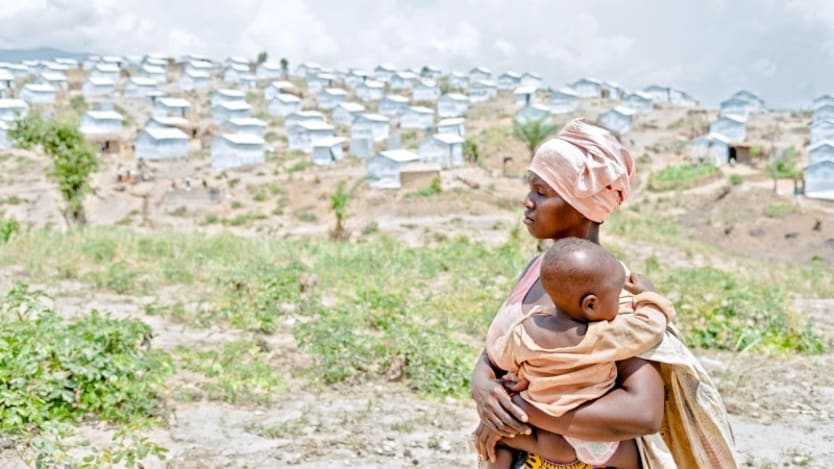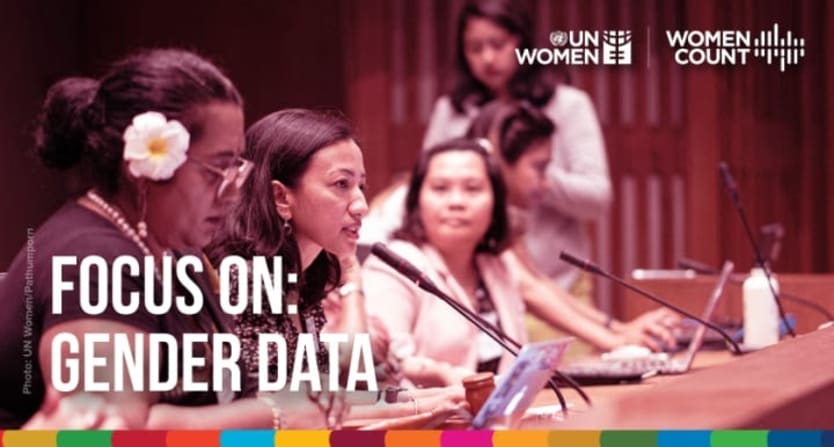
NEW YORK — Women are more likely to experience food insecurity than men, and the pandemic has exacerbated this divide. Women continue to shoulder more household responsibilities, but also now bear the burden of increased poverty and health risks.
Part of our Focus on: Gender Data
This focus area, powered by UN Women, highlights how data is being used to inform policy and advocacy to advance gender equality. Gender data is crucial to make every woman and girl count.
“When it comes to food security during COVID, women have been more exposed pretty much in all the countries we have surveyed. They're the ones that collect the food, they harvest the food, and when there's no availability of food in the country, they are ones that suffer the most,” said Michelle Palacios Franco, a food security and livelihoods adviser at Action Against Hunger. “They eat less, and this is a given.”
But the exact extent to which women experience more hunger or malnutrition than men is not clear, experts say.
“Unfortunately, you can't draw those conclusions. We have some great qualitative data. That is women in their own words, talking about the food insecurity that they're facing and what they're doing to make ends meet for their family. But we don't have that kind of big picture countrywide data that we might like to have,” said Sarah Fuhrman, a humanitarian policy specialist with CARE International.
Omission from food insecurity analysis
The Integrated Phase Classification Acute Food Insecurity classification, which produces food insecurity analyses, forecasts, and famine warnings, does not provide gender-disaggregated data. The World Food Programme identifies women as a vulnerable population that faces increased risks of food insecurity, and has hunger and malnutrition estimates for pregnant and nursing women. But it does not provide overall gender-disaggregated data on food insecurity in its regular updates.
“If we had a better understanding of exactly who was in need and in which type of need, we'd be able to tailor responses in a way that would address critical gaps earlier.”
— Sarah Fuhrman, a humanitarian policy specialist, CARE InternationalAnd no single country “has come up with a system for producing gender-disaggregated data on food insecurity that we can use in our analyses and work,” according to Justus Liku, a senior adviser in emergency food and nutrition security at CARE International.
CARE International is among the organizations that sits on the IPC’s review board, and has encouraged them to disaggregate their data by gender. But that would require the humanitarian organizations and governments, which inform IPC’s data collection process, to themselves first disaggregate their data on food insecurity.
“A lot of them are still using that really kind of outdated view of heads of household. So they might be going around to different community members and talking to them about what food security looks like. They're usually basing that on men and what a very patriarchal idea of a household looks like,” Fuhrman explained.
“When all of that data gets pooled and they make their estimates, it's essentially gender blind or at least not gender sensitive. So you're really getting a very incomplete picture of what food security looks like in a particular location,” Fuhrman continued.
Additional demographic information on widows, for example, older people, or people living with disabilities, is also typically not picked up in food insecurity analysis, according to Fuhrman.
“Overall, this traditional way of looking at food security is not serving anyone in a community as well as it could,” Fuhrman explained.
Despite individual efforts, ‘the gender data gap persists’
CARE has tailored its data analysis work during the pandemic to get a better understanding of how food insecurity specifically impacts women and girls. For the past five years, all of CARE programming has included collecting gender-disaggregated data. The organization’s rapid gender analyses, underway since 2013, have more than doubled in number since the start of the pandemic, according to Emily Janoch, director for knowledge management and learning for CARE USA.
Action Against Hunger also disaggregates its internal data on gender, as well as other indicators like disability.
Women’s responses to these analyses have helped inform CARE’s response to the pandemic, according to Janoch, as women have responded to the rapid questionnaires saying that they are more likely to choose food over soap if they can only purchase one, for example.
“That becomes very helpful in terms of planning your response, in terms of what kind of assistance we are providing. If we are talking about toilets, or water, or food, this detailed information becomes very, very valuable in determining the quantities required for different gender groups,” Janoch said.
Several groups are already working to tackle the food insecurity gender data gap.
WFP, Gallup Inc., and the Food and Agricultural Organization are undertaking a new quantitative measure that assesses the interconnectedness of disempowerment and food insecurity — or empowerment and food security.
“The gender data gap persists. And there is no quantitative measure that gathers data on a person’s experiences of gender in/equality and of food in/security,” WFP reported in April.
In 2018, Gallup polls applied the measure, called Gender Equality for Food Insecurity, in seven countries, including Bangladesh, Zambia, and Thailand, and then an additional 10 countries in 2019. The measure includes questions on housework, decision making, property, and money.
Sex-disaggregated data collected by WFP and Gallup showed that women are more likely than men to experience food insecurity in 10 of the 17 countries, and they are also less likely to experience empowerment than men.
But gaps remain in making gender-disaggregated data a standard part of large-scale food insecurity analysis at the national and international level, according to Fuhrman. Donors could step in to create financial incentives for practitioners collecting this information, in order to jump-start progress, she said. But interest in the gendered effects of the pandemic has thus far not matched with available funding or commitments, Fuhrman continued.
“One of the humanitarian principles, of course, is to provide aid on a needs basis and to provide aid impartially. And I think we're failing to do that, because we are not taking into account the different needs of different populations,” Fuhrman said.
“If we had a better understanding of exactly who was in need and in which type of need, we'd be able to tailor responses in a way that would address critical gaps earlier and hopefully prevent situations from getting worse.”
Devex, with support from our partner UN Women, is exploring how data is being used to inform policy and advocacy to advance gender equality. Gender data is crucial to make every woman and girl count. Visit the Focus on: Gender Data page for more. Disclaimer: The views in this article do not necessarily represent the views of UN Women.









